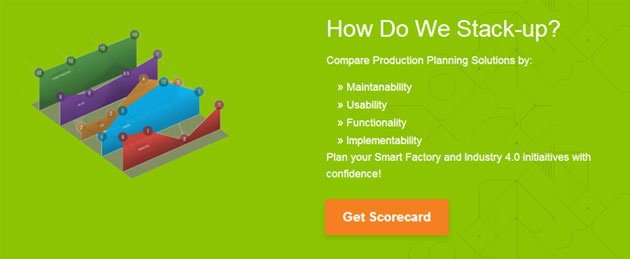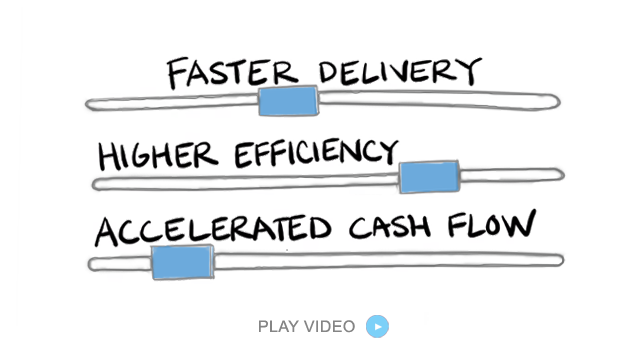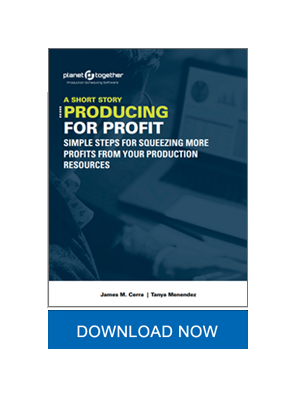Redefining Procurement: The Role of Category Management in Packaging and Containers Manufacturing
In the packaging and containers manufacturing industry, where profit margins are tight and customer demands evolve rapidly, the procurement function can no longer rely on traditional cost-cutting tactics alone. Instead, strategic sourcing approaches such as Category Management are reshaping how purchasing managers like you create value, ensure supply security, and drive long-term operational efficiency.
As global supply chains grow more complex, adopting tools that enhance visibility and streamline planning is essential. That’s where PlanetTogether Advanced Planning & Scheduling (APS) comes into play—especially when integrated with enterprise platforms like SAP, Oracle, Microsoft, Kinaxis, or Aveva. These integrations empower Purchasing Managers to make smarter category-based decisions that align procurement strategies with production goals.
In this blog, we’ll explore the pivotal role of Category Management in packaging and containers manufacturing and how integrated planning systems elevate its impact.
What is Category Management in Manufacturing Procurement?
Category Management is a strategic approach to procurement where products or services are grouped into categories with similar characteristics—such as plastics, adhesives, or corrugated cardboard. Rather than sourcing individual items reactively, purchasing teams develop long-term category strategies to optimize cost, quality, innovation, and supplier relationships.
In a packaging manufacturing facility, this might mean creating detailed strategies for categories like:
Resins and polymers
Printing inks and dyes
Adhesives and sealants
Corrugated packaging materials
Flexible packaging films
Shrink wraps and laminates
The goal is to treat each category as a mini-business, aligning procurement decisions with broader production, sustainability, and customer-service goals.

Why Category Management Matters in Packaging Manufacturing
Volatile Raw Material Prices
The packaging industry is highly sensitive to price fluctuations in commodities like oil (for plastic resins) or paper pulp. Category Management enables proactive procurement through hedging strategies, long-term contracts, and supplier diversification.
Supplier Consolidation and Risk Management
Rather than maintaining dozens of redundant suppliers, category strategies help streamline your supplier base while reducing risk through multi-sourcing within the category.
Support for Innovation and Sustainability
Sustainable packaging is no longer optional—it’s a customer demand. Category Management supports innovation by engaging strategic suppliers early in product development, enabling new materials and greener alternatives.
Better Alignment with Production and Planning
Through a category lens, procurement can better anticipate production needs, plan for demand variability, and manage inventory more effectively.

Integrating PlanetTogether with ERP for Category-Based Decision-Making
While the principles of Category Management are powerful, their full potential is only unlocked when integrated with real-time planning and operational data. This is where the integration between PlanetTogether APS and your ERP system (SAP, Oracle, Microsoft Dynamics, Kinaxis, or Aveva) plays a crucial role.
Here's how this integration benefits Category Management:
Real-Time Demand Visibility
When PlanetTogether integrates with your ERP, planners and purchasing managers gain live updates on material requirements, inventory levels, and production schedules.
This ensures that your category strategies are grounded in real-time operational data, not outdated forecasts.
Improved Supplier Collaboration
By aligning supplier lead times, MOQ, and capacity constraints with APS insights, you can optimize your order patterns and reduce stockouts or overstocking.
This is especially critical for volatile categories like inks and polymers.
Scenario Planning for Supply Disruptions
With integrated systems, you can simulate supply disruptions or price increases within a category and assess the impact on production.
This makes it easier to create resilient sourcing strategies.
Inventory Optimization
Category Managers can prioritize materials based on usage rates, production criticality, and shelf life.
Integrated tools like PlanetTogether enable dynamic safety stock calculations based on live production and sales data.
Building a Category Management Framework with APS Integration
Let’s walk through a practical step-by-step approach to implementing a Category Management strategy using PlanetTogether APS and your integrated ERP system:
Step 1: Segment Spend into Categories
Start by analyzing your procurement spend from SAP, Oracle, or Microsoft ERP. Group materials by use, supplier market, and technical characteristics. PlanetTogether can help by aligning production data with these material inputs.
Step 2: Conduct Category Analysis
Assess each category's risk, cost structure, demand variability, and supplier landscape. Use planning data from PlanetTogether to identify demand patterns, bottlenecks, and inventory inefficiencies.
Step 3: Develop Category Strategies
Design strategies tailored to each category’s goals—e.g., cost reduction, innovation, or risk mitigation. For example:
Plastic Films: Long-term pricing agreements with tier-one suppliers
Inks: Dual sourcing strategy with a focus on environmentally friendly options
Corrugated Boards: Just-in-time replenishment to minimize storage costs
Step 4: Execute and Monitor
Use the integration between PlanetTogether and your ERP to track KPIs such as supplier performance, stock coverage, and forecast accuracy in real time.
Overcoming Common Challenges
Even with powerful tools, deploying Category Management isn’t without hurdles:
| Challenge | Solution |
|---|---|
| Fragmented data across systems | Use integrated platforms (PlanetTogether + SAP/Oracle) to centralize data |
| Lack of category expertise | Form cross-functional teams with engineering, planning, and finance |
| Resistance to change | Start with one or two high-impact categories to demonstrate value |
| Siloed planning and procurement | Break down barriers by integrating scheduling with sourcing |
Category Management is no longer just a best practice—it’s a necessity for packaging and containers manufacturers that aim to compete on more than price. As a Purchasing Manager, embracing a category-based approach gives you the power to align supplier relationships, materials management, and operational goals.
But strategy alone isn’t enough. Integrating PlanetTogether APS with ERP systems like SAP, Oracle, Microsoft, Kinaxis, or Aveva is the catalyst that transforms Category Management from theory into action. It allows you to make data-driven decisions that optimize costs, support innovation, and keep your production lines running smoothly.
Start small, think big, and scale fast. Your categories—and your margins—will thank you.
Want to see how PlanetTogether can support your Category Management initiatives?
Let’s schedule a live demo that shows how integrated planning and procurement can power your plant’s performance.
Topics: Inventory Optimization, PlanetTogether Software, Integrating PlanetTogether, Improved Supplier Collaboration, Packaging Manufacturing, Real-Time Demand Visibility, Scenario Planning for Supply Disruptions





















LEAVE A COMMENT